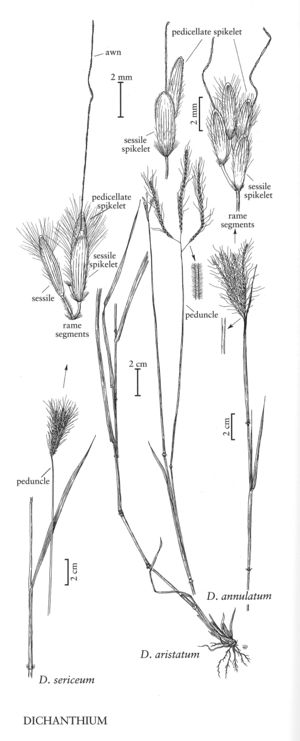Dichanthium annulatum
Plants perennial; stoloniferous. Culms to 100 cm, decumbent, erect portions generally to 60 cm, often branched above the bases, glabrous beneath the inflorescences; nodes glabrous or short-pubescent. Sheaths glabrous; ligules 1-1.8 mm, truncate; blades 3-30 cm long, 2-7 mm wide, scabrous, sparsely pilose, hairs some¬times papillose-based. Rames 2-9, 2.5-7 cm, subdigitate, erect to ascending, bases without spikelets, glabrous, internodes ciliate on the margins. Sessile spikelets 2.5-5 mm long, 1-1.5 mm wide; lower glumes elliptic or oblong, sparsely pubescent below, apices obtuse, irregularly 2-3-toothed, 5-9-veined; upper glumes 3-veined; awns 1.3-2.2 cm, twice-geniculate. Pedicellate spikelets 2.5-5 mm, usually staminate. 2n = 20, 40.
Distribution
Puerto Rico, Pacific Islands (Hawaii), Tex., La.
Discussion
Dichanthium annulatum is native to southeastern Asia and is a highly esteemed forage grass, especially in India. It is now established at scattered locations in Texas, Louisiana, and Florida.
Selected References
None.
Lower Taxa
"decumbent" is not a number.
